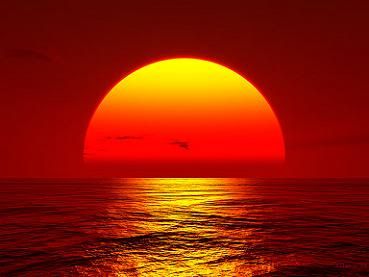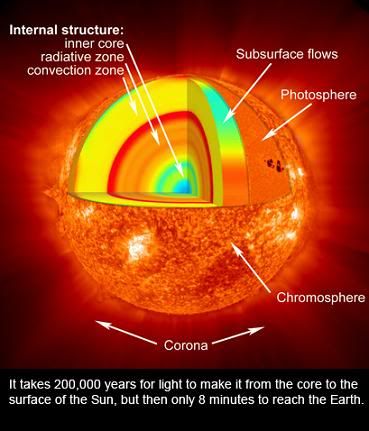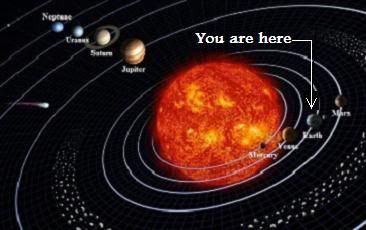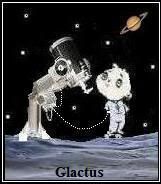Post by glactus on Nov 5, 2011 0:32:43 GMT
It is said that there are 143 different religions on Earth, and the believers of each of them are firmly convinced that their God is the only true God, bringing benefits to all, more so than any of the other Gods. When each religion is analyzed and those benefits put into perspective, the religion which stands out above all others is one in which the believers worship the Sun. Who are these modern day Sun worshipers? They are a pygmy tribe who live in the jungles of New Guinea. 100 years behind us in science and education, and 100 years ahead of us in worship with meaning and truth, and family law.

The rising Sun. Bringing a new day, life to all, and hope
Why is it the best God? The Sun brings life to all things, we humans, the animals the birds, the fish, the insects and the crawly things and to the millions of flower and fauna species here on Earth. Without the sun, life would not exist. The Sun gives light to activate the eyes of all speecies and enables them to enjoy the marvels attributed to this heavenly body, one which asks for no rewards. What a God!!

The Layers of the Sun
Our Sun is a normal main-sequence G2 star, one of more than 100 billion stars in our galaxy.
diameter: 1,390,000 km.
mass: 1.989e30 kg
temperature: 5800 K (surface)
15,600,000 K (core)

You are here. The Sun and its planets
The Sun is by far the largest object in the solar system. It contains more than 99.8% of the total mass of the Solar System (Jupiter contains most of the rest). It is often said that the Sun is an "ordinary" star. That's true in the sense that there are many others similar to it. But there are many more smaller stars than larger ones; the Sun is in the top 10% by mass.
The median size of stars in our galaxy is probably less than half the mass of the Sun. The Sun is, at present, about 70% hydrogen and 28% helium by mass everything else ("metals") amounts to less than 2%. This changes slowly over time as the Sun converts hydrogen to helium in its core.The outer layers of the Sun exhibit differential rotation: at the equator the surface rotates once every 25.4 days; near the poles it's as much as 36 days.
This odd behavior is due to the fact that the Sun is not a solid body like the Earth. Similar effects are seen in the gas planets. The differential rotation extends considerably down into the interior of the Sun but the core of the Sun rotates as a solid body.
Conditions at the Sun's core (approximately the inner 25% of its radius) are extreme.
The temperature is 15.6 million Kelvin and the pressure is 250 billion atmospheres. At the center of the core the Sun's density is more than 150 times that of water and The Sun's power (about 386 billion billion megaWatts) is produced by nuclear fusion.
To see video of the sun, just click on the link below. Has sound.
science.discovery.com/videos/space-school-the-sun.html

Credits: These are non copywrite images
Text by Wikipedia/Glactus
Video by Space School

The rising Sun. Bringing a new day, life to all, and hope
Why is it the best God? The Sun brings life to all things, we humans, the animals the birds, the fish, the insects and the crawly things and to the millions of flower and fauna species here on Earth. Without the sun, life would not exist. The Sun gives light to activate the eyes of all speecies and enables them to enjoy the marvels attributed to this heavenly body, one which asks for no rewards. What a God!!

The Layers of the Sun
Our Sun is a normal main-sequence G2 star, one of more than 100 billion stars in our galaxy.
diameter: 1,390,000 km.
mass: 1.989e30 kg
temperature: 5800 K (surface)
15,600,000 K (core)

You are here. The Sun and its planets
The Sun is by far the largest object in the solar system. It contains more than 99.8% of the total mass of the Solar System (Jupiter contains most of the rest). It is often said that the Sun is an "ordinary" star. That's true in the sense that there are many others similar to it. But there are many more smaller stars than larger ones; the Sun is in the top 10% by mass.
The median size of stars in our galaxy is probably less than half the mass of the Sun. The Sun is, at present, about 70% hydrogen and 28% helium by mass everything else ("metals") amounts to less than 2%. This changes slowly over time as the Sun converts hydrogen to helium in its core.The outer layers of the Sun exhibit differential rotation: at the equator the surface rotates once every 25.4 days; near the poles it's as much as 36 days.
This odd behavior is due to the fact that the Sun is not a solid body like the Earth. Similar effects are seen in the gas planets. The differential rotation extends considerably down into the interior of the Sun but the core of the Sun rotates as a solid body.
Conditions at the Sun's core (approximately the inner 25% of its radius) are extreme.
The temperature is 15.6 million Kelvin and the pressure is 250 billion atmospheres. At the center of the core the Sun's density is more than 150 times that of water and The Sun's power (about 386 billion billion megaWatts) is produced by nuclear fusion.
To see video of the sun, just click on the link below. Has sound.
science.discovery.com/videos/space-school-the-sun.html
Credits: These are non copywrite images
Text by Wikipedia/Glactus
Video by Space School




